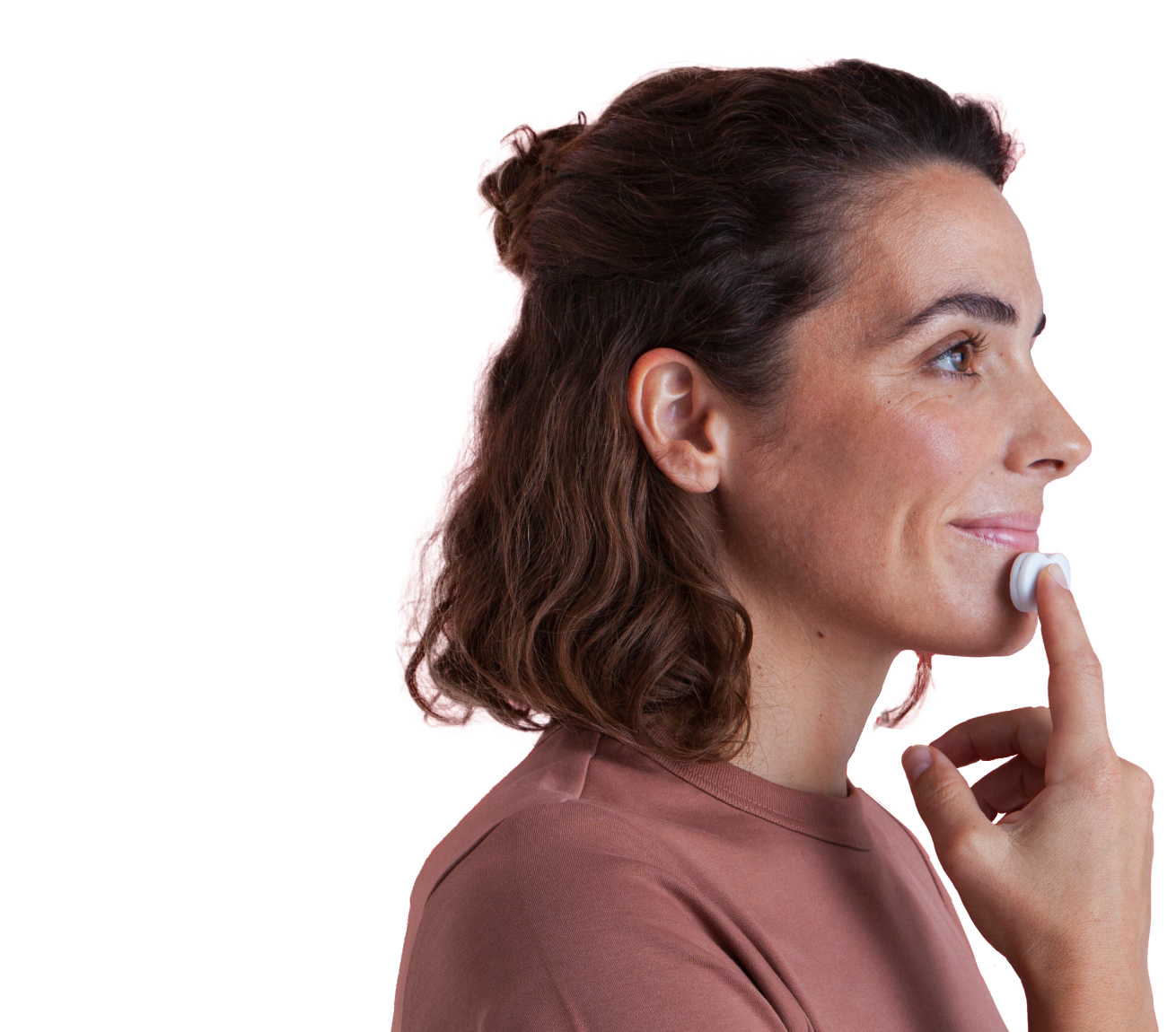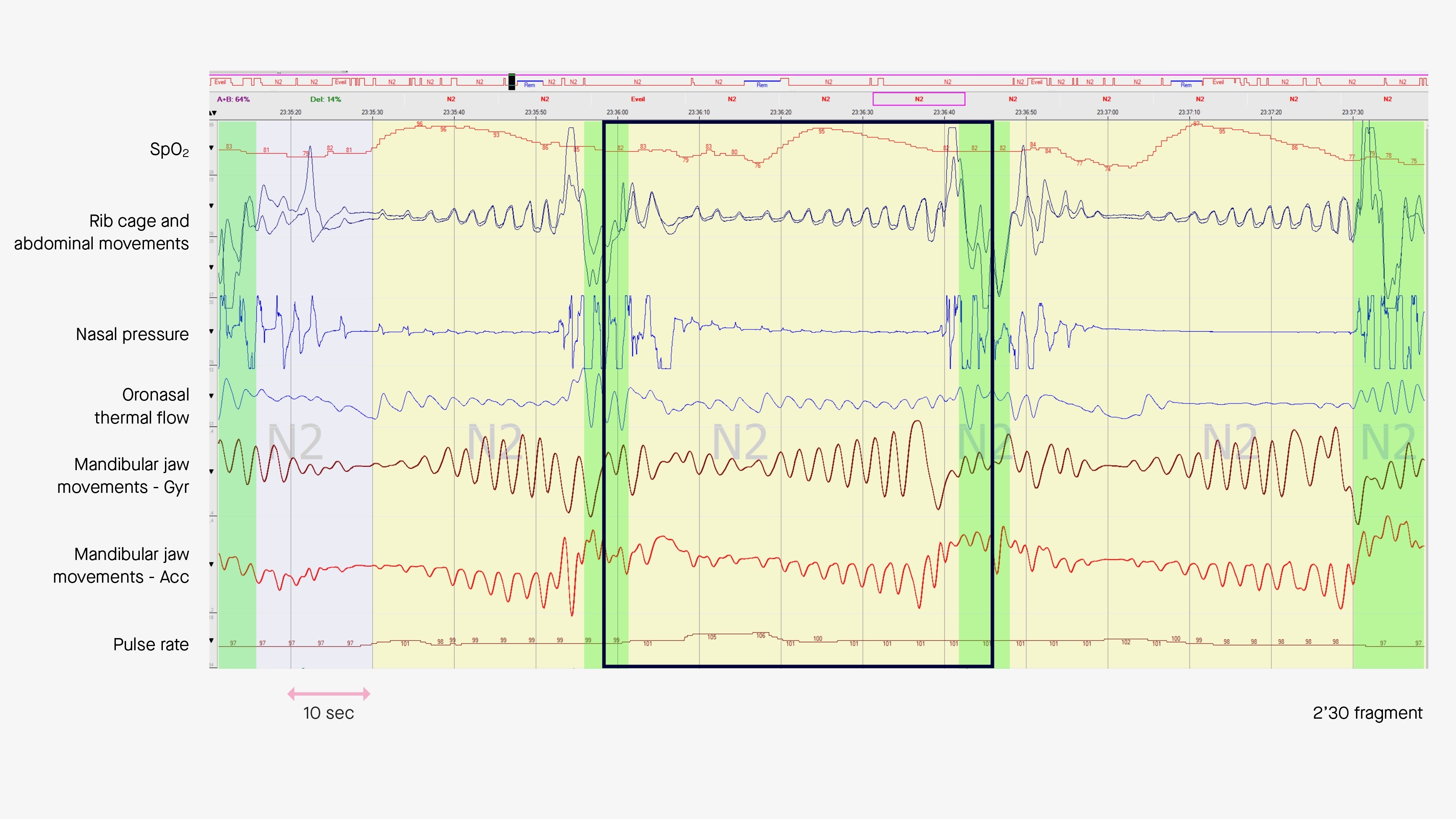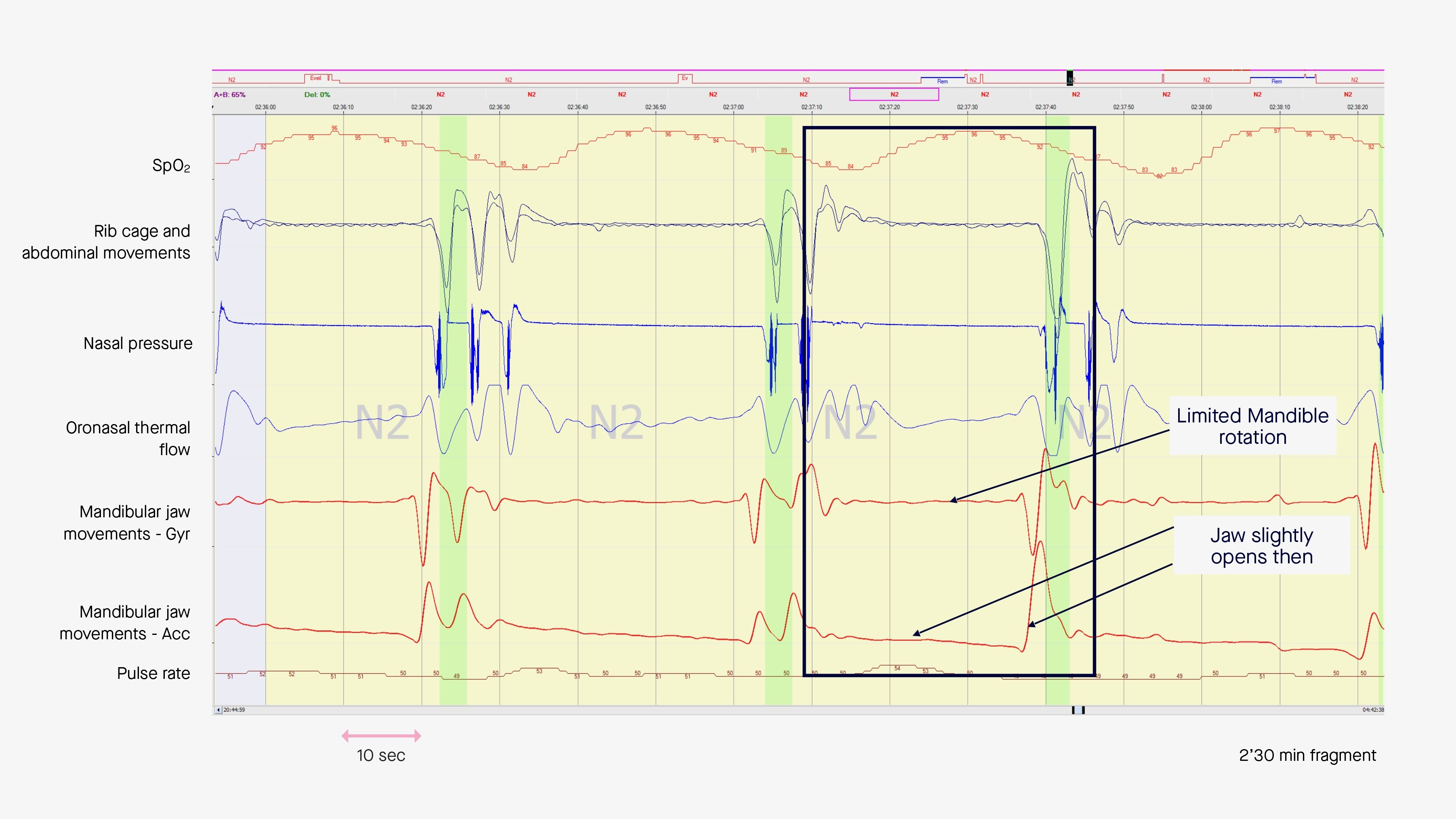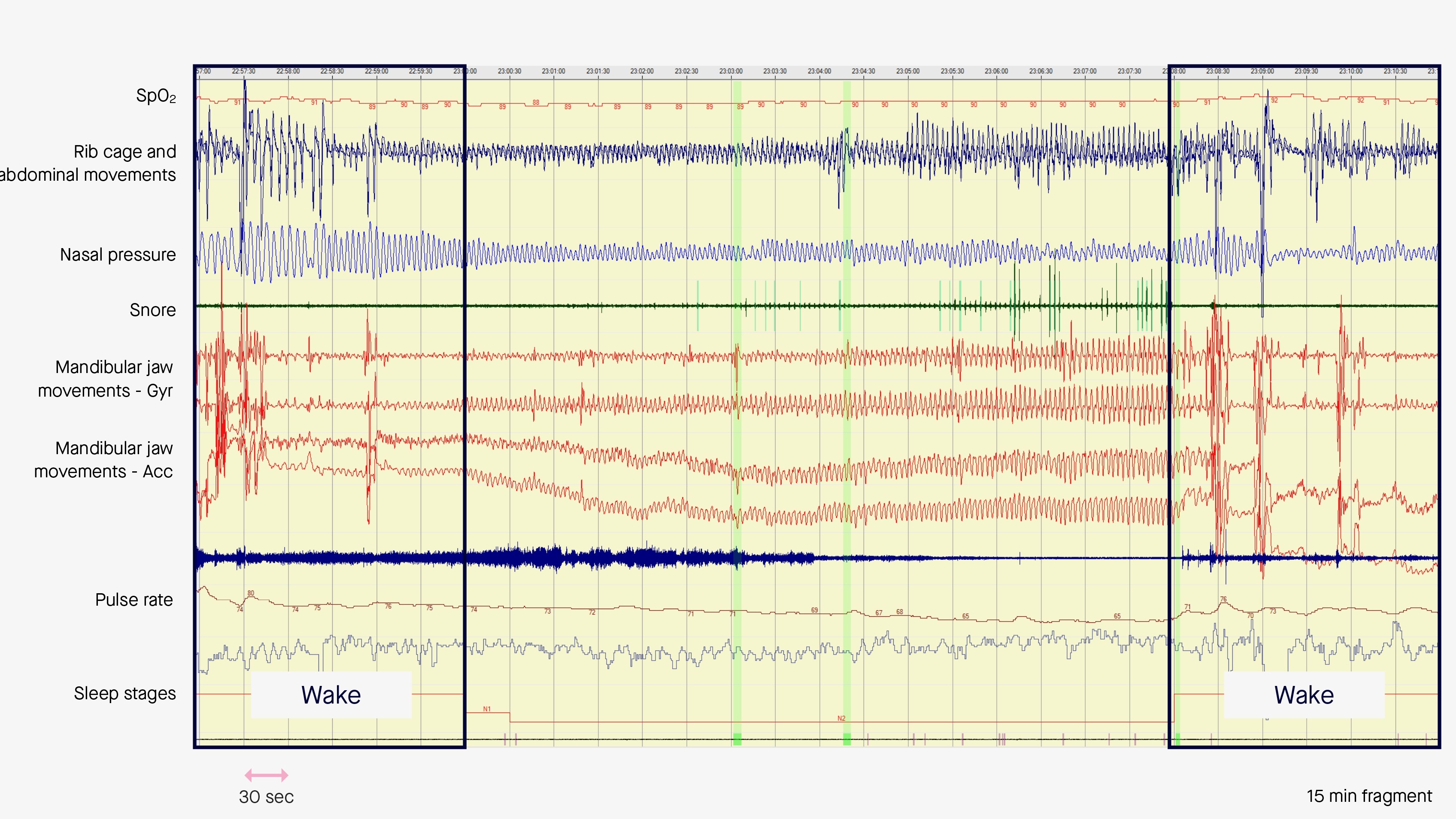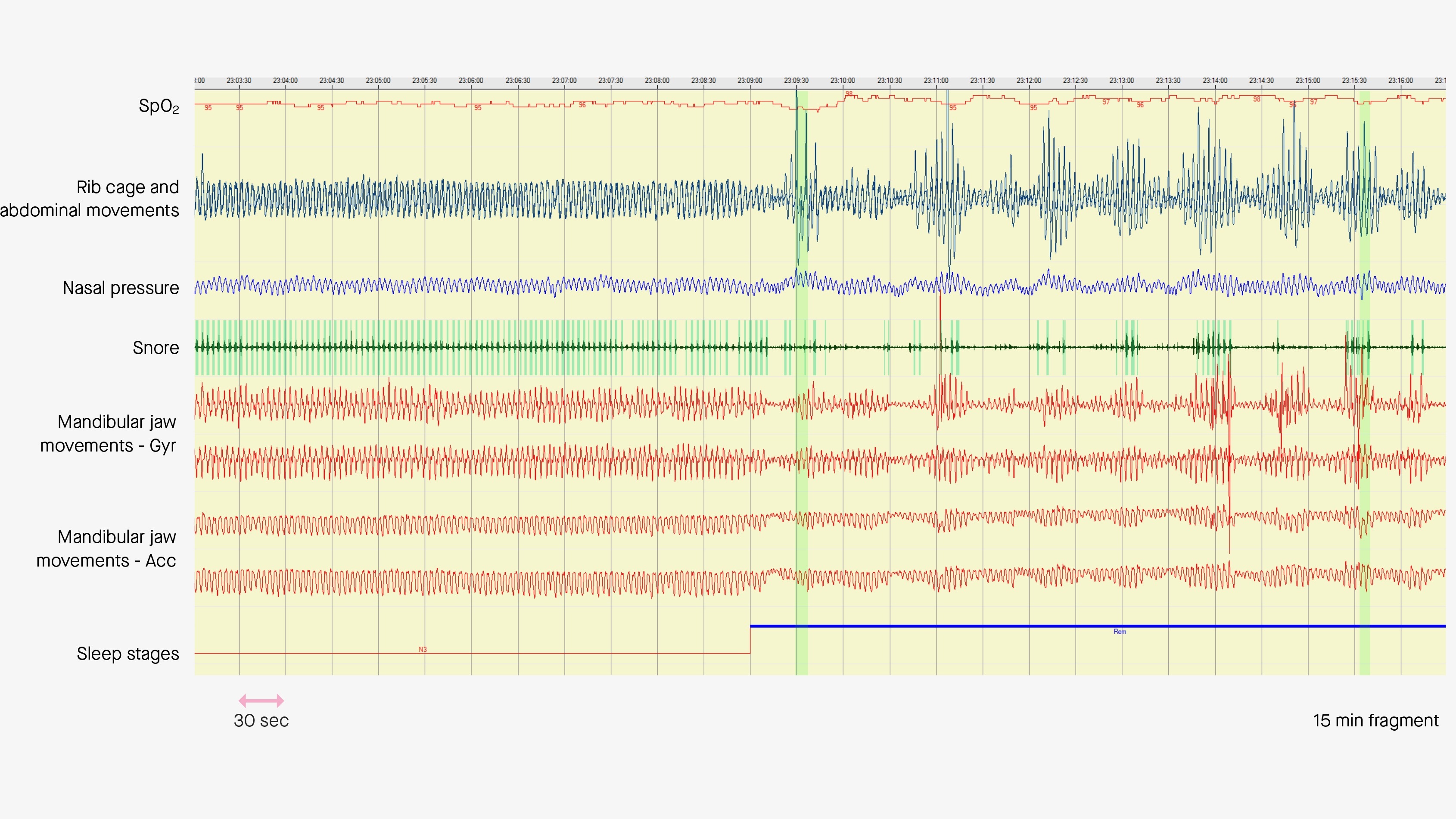The only HSATclinically
validated against
esophageal pressure.
validated against
esophageal pressure.
Results recently published in Nature and Science of Sleep1 showed that the MJM bio-signal is a highly reliable and non-invasive surrogate of the esophageal pressure (Pes) gold-standard signal to measure respiratory effort during sleep.
The authors analyzed 6,561 respiratory events representing 46.2 hours of abnormal breathing disorders. The MJM signal produced comparable peak-to-peak amplitudes with the envelope drawn around the PeS signal measured during concomitant in-laboratory PSG.
The graph on the left shows the high correlation between Pes and MJM bio-signal amplitudes reflecting respiratory effort during normal breathing and different abnormal respiratory events described at the 5th, 25th, 50th, 75th and 95th percentiles.
1mmin the oropharynx
is worth a mile.
is worth a mile.
Many of the pharyngeal muscles are anchored on the mandible. Therefore, contracting or relaxing these muscles generates discrete and informative mandibular jaw movements (MJM).
The more the pharyngeal patency is threatened during respiratory disturbances (resulting in chemo- and baro-receptors activation), the more the pharyngeal muscles will be recruited and the more the mandible will displace in order to stiffen the upper airway and restore its patency.
In other words, monitoring the amplitude of MJM during sleep informs about the level of central drive required to ensure respiration, i.e. the level of respiratory effort.
